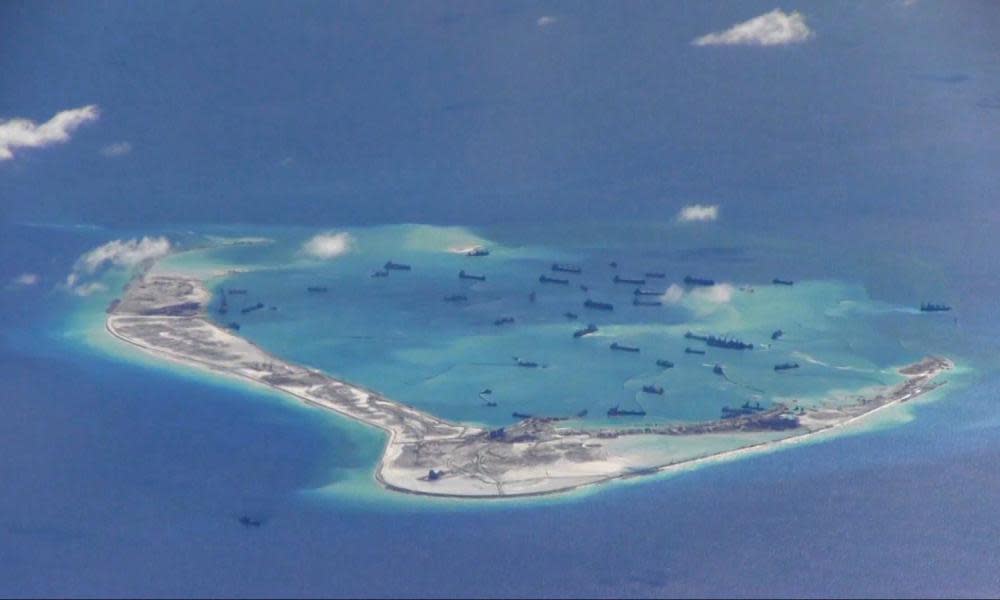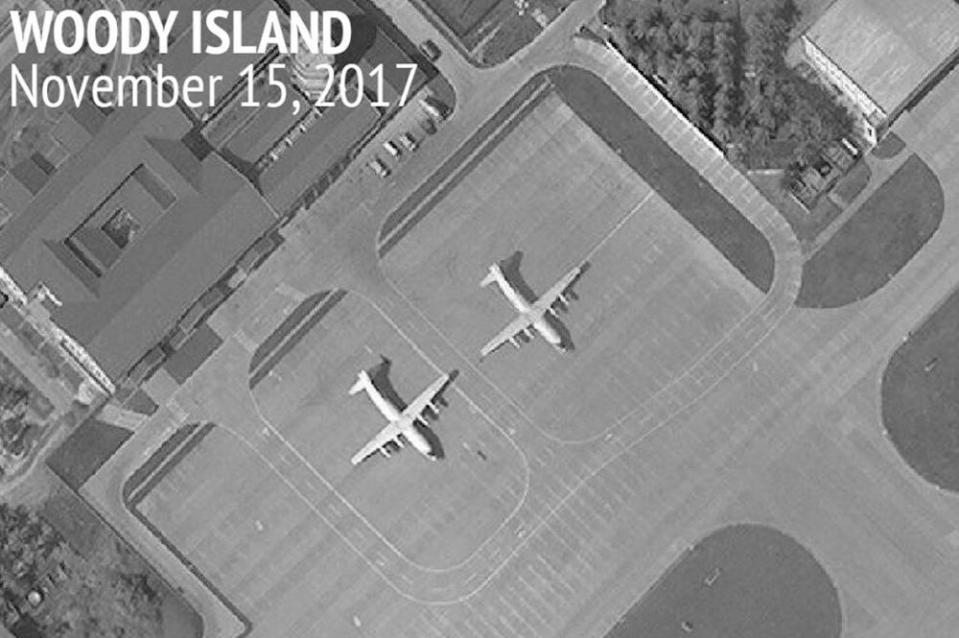'Slow-moving crisis' as Beijing bolsters South China Sea war platform

China has created military facilities about four times the size of Buckingham palace on contested islands in the South China Sea, a new report has said, calling the build-up a “slow-moving crisis” in one of the world’s most dangerous flashpoints.
China built about 29 hectares (290,000 square metres) of new facilities on contested islands in 2017, including munitions depots, sensor arrays, radar systems and missile shelters, according to an analysis by US thinktank the Center for Strategic and International Studies.
Control of the South China Sea is one of the most contentious and explosive diplomatic issues in East Asia. For centuries, various regional powers have laid claim to the sea, which is rich in fisheries and serves as a shipping lane for more than half of the world’s oil tanker traffic.
China maintains fierce territorial disputes with Vietnam, Taiwan, Malaysia, Brunei, and the Philippines over the 3.5m sq km stretch of water that is also believed to have significant oil and gas reserves. At the peak of animosity during the 1970s and 1980s, China and Vietnam used force several times, resulting in dozens of deaths and several sunken ships.
Chinese President Xi Jinping has vowed to “resolutely defend” the region. During the past few years, Beijing has dredged sand on coral reefs to transform them into islands that it uses as military bases, fitted with missile launchers, runways, barracks and radar facilities.
The US has grown increasingly alarmed by the military build up. Washington has become involved in the disputes, backing those that oppsoe China and conducting naval patrols.
In 2016, an international tribunal in The Hague overwhelmingly backed the Philippines in its dispute against Chinese control of atolls near its shores. However, Philippine President Rodrigo Duterte has looked to China as an economic partner and has not pursued the issue.
The South China Sea is dotted with small reefs and islands, and parts of it are claimed by a host of south-east Asian neighbours.
China claims nearly the entire sea and has artificially increased the size of some islands and deployed fighter jets to bolster its claims, with the islands frequently described as “unsinkable aircraft carriers”. Beijing has reclaimed 1,280 hectares of land in just one area, according to the US department of defence.


Beijing has begun diplomatic overtures to countries in south-east Asia, joining talks to develop a code of conduct for the South China Sea, although those talks will likely take years to produce a result all parties can agree on.
The United States, the United Kingdom and other have long criticised China’s island building and military deployments in the disputed waters, while Beijing counters that the air strips, fighter planes and missile installations are there to protect fishing boats.
“Further militarisation of outposts will only serve to raise tensions and create greater distrust among claimants,” said Marine Lt Col Christopher Logan, a Pentagon spokesman, but he declined to comment on specific US assessments of China’s build-up.
The US regularly sails warships past the islands amid Chinese objections in what are described as freedom of navigation exercises. The UK has said it plans to send a warship, possibly an aircraft carrier, to the region sometime next year.
In an effort to increase pressure on China, the recently passed US defence budget included a provision encouraging navy ships to make port calls in Taiwan.
China considers the self-governing island part of its territory and has reacted angrily to the proposal. A clause in the defence bill signed by Donald Trump directs the Pentagon to “consider the advisability and feasibility of re-establishing port of call exchanges between the United States Navy and the Taiwan navy”.
“We firmly oppose any form of official exchanges or military links between Taiwan and the US, as well as US arms sales to Taiwan,” said Lu Kang, a Chinese foreign ministry spokesman. “We hope that the US can fully grasp the damaging nature [of the legislation].”
Last week a Chinese diplomat in Washington warned that the island would be taken by force if US warships docked at Taiwanese ports.
Before joining the Trump administration, former White House strategist Steve Bannon described the South China Sea as one of the most dangerous international flashpoints.
“We’re going to war in the South China Sea in five to 10 years,” he said in March 2016. “There’s no doubt about that. They’re taking their sandbars and making basically stationary aircraft carriers and putting missiles on those.”

 Yahoo News
Yahoo News 
